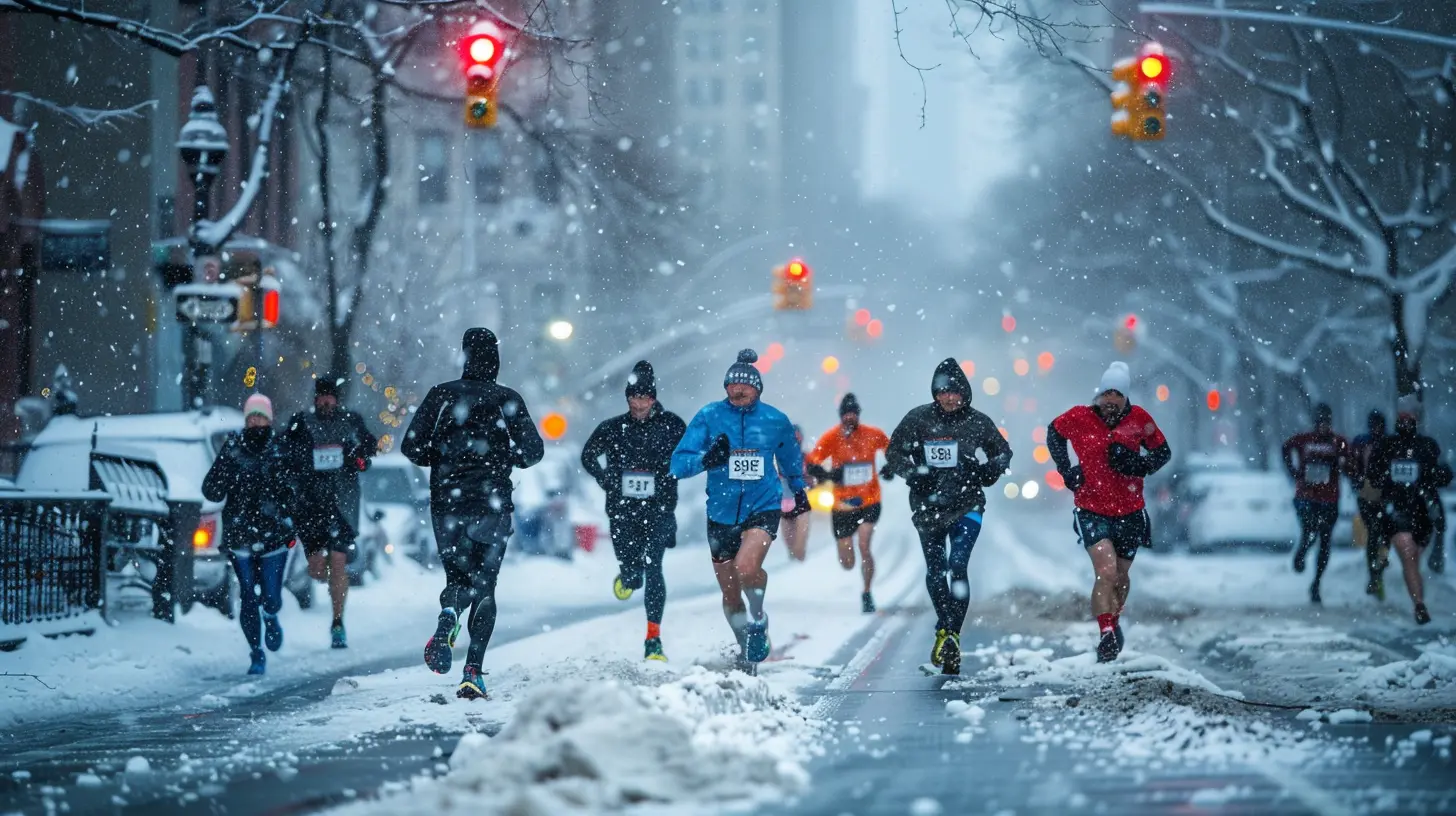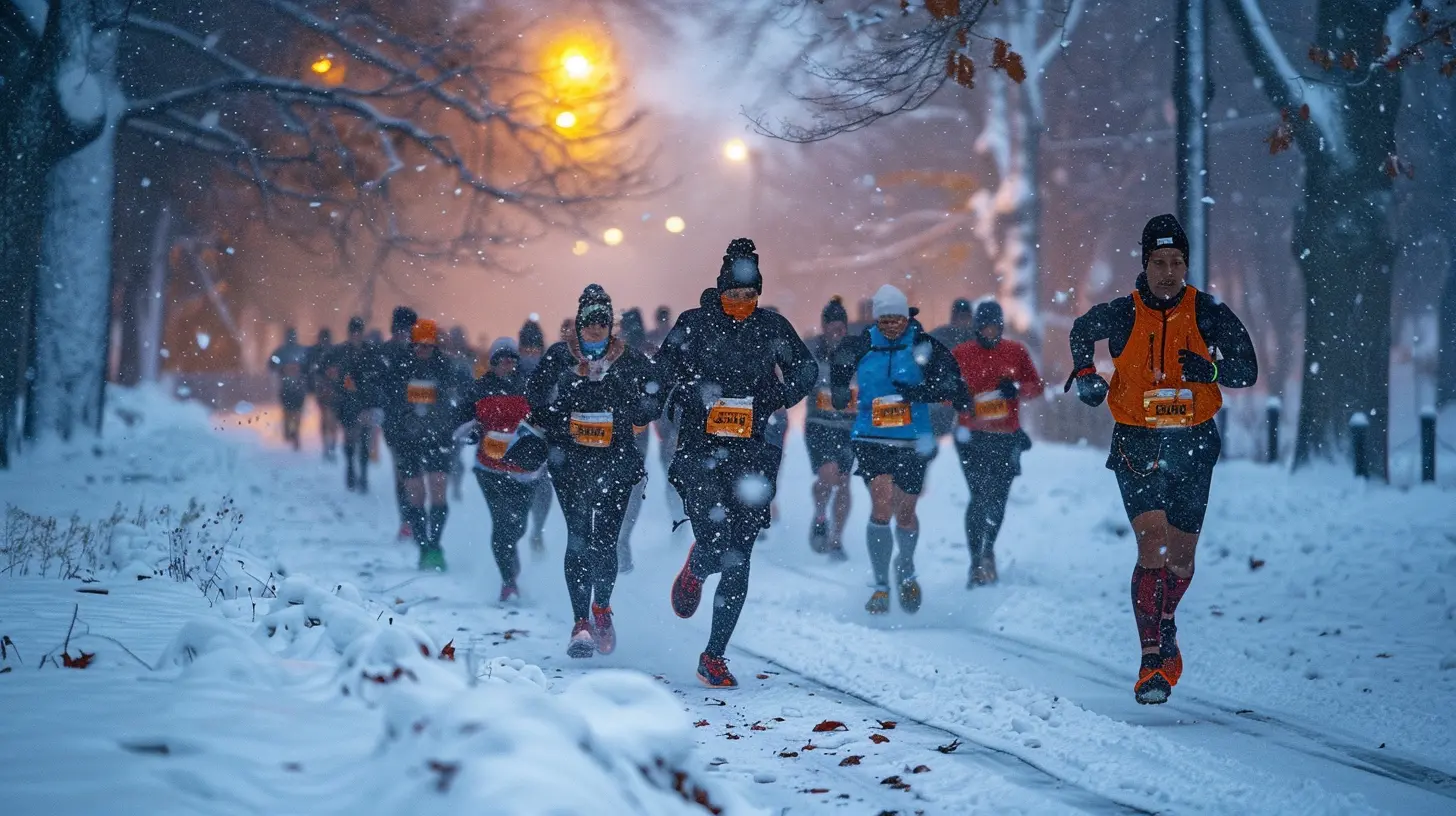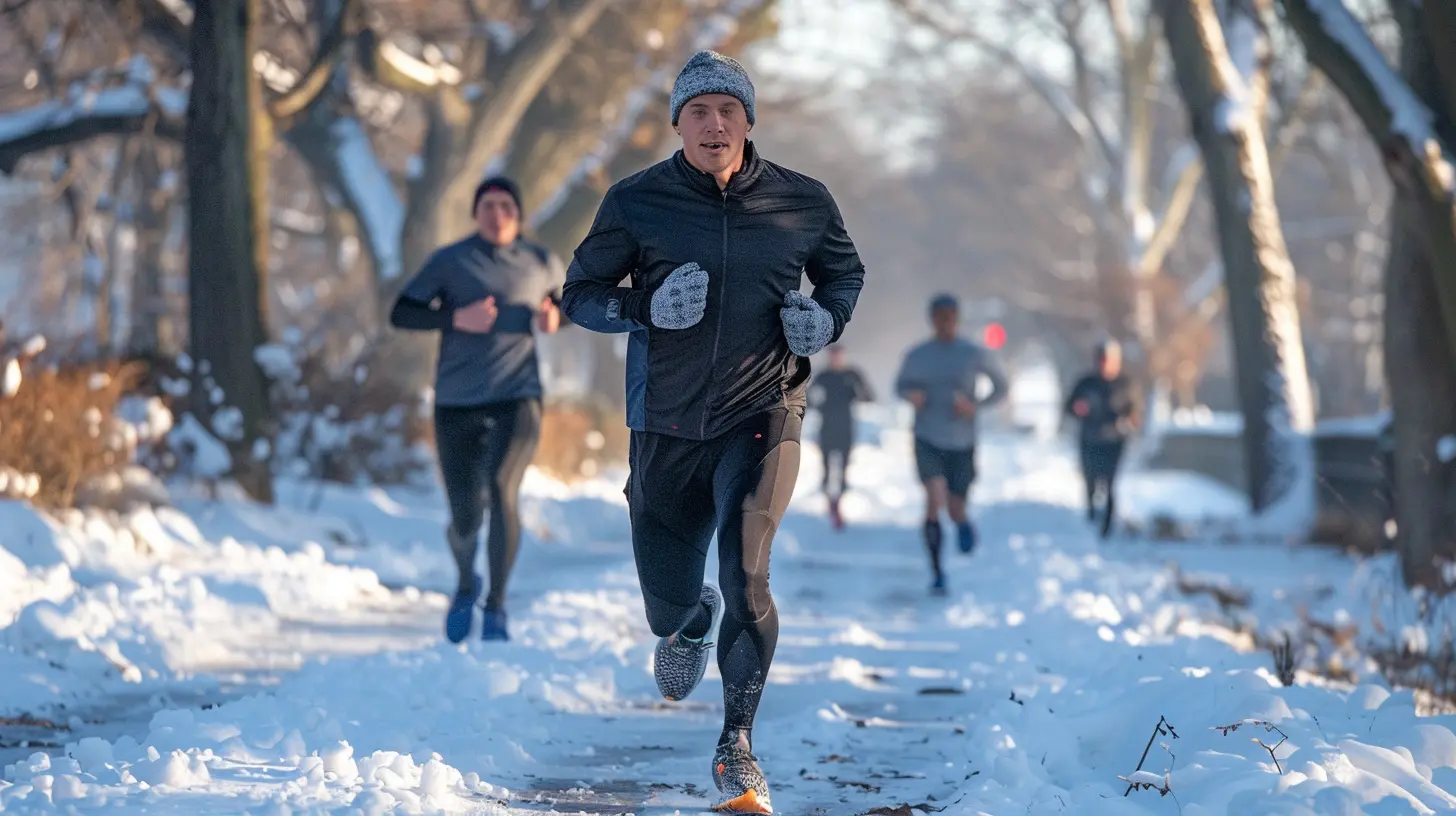6 April 2025
When temperatures drop and snowflakes start falling, many runners trade their sneakers for the warmth of their couch. But winter doesn't have to mean hibernation! Running in cold weather can be refreshing, exhilarating, and incredibly rewarding—if you have the right gear and knowledge to stay safe and comfortable.
If you're ready to conquer the cold, let’s dive into everything you need to know about running in frigid conditions.

Why Running in Cold Weather is Worth It
Running during winter isn't just about maintaining your fitness; it offers some surprising benefits:- Boosts Mental Toughness – If you can run in freezing temperatures, you can handle just about anything.
- Burns More Calories – Your body works harder to stay warm, meaning you torch more calories.
- Keeps You Consistent – Skipping workouts just because it’s cold disrupts your routine. Staying active year-round keeps motivation high.
- Strengthens Your Lungs – Cold air can help improve lung capacity and efficiency over time.
Of course, the key to enjoying a winter run is dressing smart and knowing how to adapt. 
Essential Cold Weather Running Gear
You wouldn't step onto a battlefield without armor, and you shouldn't hit the road without proper gear in winter. Here's what you need:1. Base Layer: The Foundation of Warmth
The first layer against your skin should be moisture-wicking and snug. Sweat is your enemy in the cold—once it soaks your clothes, you'll start freezing.- Best Fabrics: Merino wool and synthetic materials (polyester or polypropylene)
- Avoid: Cotton (it retains moisture and makes you colder)
2. Insulating Mid-Layer: Trapping the Heat
Your mid-layer is where heat retention happens. Think of it as the cozy insulation in your winter jacket.- Best Choices: A fleece-lined quarter-zip or a lightweight down vest
- Pro Tip: If it’s not too cold, you can skip this layer to avoid overheating.
3. Outer Layer: Blocking the Wind and Snow
This is your shield against the elements. A good outer layer should be windproof and water-resistant while remaining breathable.- Best Options: Softshell or Gore-Tex jackets
- Avoid: Heavy-duty winter coats (they trap too much heat and restrict movement)
4. Legwear: Keeping Those Limbs Warm
Your legs don’t need as many layers as your upper body, but they still deserve protection.- For Mild Cold (30°F-40°F): Thermal running tights or compression leggings
- For Extreme Cold (Below 30°F): Wear windproof or fleece-lined tights over your base layer
5. Socks: Guarding Against Frostbite
Cold feet can ruin any run. Keep those toes warm and dry.- Best Choice: Wool-blend socks (Smartwool or Darn Tough)
- Avoid: Thin cotton socks (they trap moisture and lead to blisters)
6. Gloves or Mittens: Don't Lose Fingers to the Cold
Your hands are one of the first body parts to feel the chill.- Mild Cold: Thin, moisture-wicking gloves
- Severe Cold: Mittens (they trap heat better than gloves) or layered gloves
7. Hat or Headband: Protect That Noggin
Your head loses heat fast, so cover up!- Mild Cold: A thermal headband (covers ears but lets heat escape)
- Extreme Cold: A fleece or wool beanie
8. Face Protection: Block the Wind
Cold wind can make your skin feel like it's burning. Protect your face with:- Neck gaiters or buffs: Great for light cold
- Balaclavas: Perfect for when it’s brutally cold
9. Shoes: Grip and Warmth Matter
Your summer running shoes might not cut it when roads turn to ice rinks.- Winter Running Shoes: Gore-Tex models with extra insulation and grip (e.g., Salomon Snowcross or Brooks Cascadia GTX)
- Extra Traction: Yaktrax or microspikes for icy conditions 
Tips for Running in Cold Weather
Now that you’ve got the gear, let’s talk strategy. Running in the cold isn't just about dressing right—it’s also about adjusting your approach.1. Warm Up Indoors
Don’t start your run with stiff muscles. Do some dynamic stretching or light jogging inside for 5-10 minutes before heading out.2. Dress for "Warmer" Weather
A good rule of thumb: Dress as if it’s 10-20°F warmer than the actual temperature. You’ll start cold but warm up quickly.3. Adjust Your Breathing
Cold air can irritate your lungs. Breathe through your nose as much as possible to warm the air before it hits your lungs. A lightweight scarf or gaiter over your mouth can help.4. Watch Your Step
Ice and snow make running hazardous. Shorten your stride and land with a flatter foot to reduce slipping. Stick to plowed paths when possible.5. Hydrate (Yes, Even in Winter)
Just because you're not sweating buckets doesn’t mean dehydration isn’t a risk. Drink water before, during, and after your run.6. Be Visible
Winter months mean shorter daylight hours. Wear reflective gear and, if running in the dark, a headlamp or blinking light.7. Cool Down Indoors
Don’t stand around in wet clothes after your run. Head inside, change quickly, and stretch indoors to prevent chilling.
When It's Too Cold to Run Outside
As much as we love a frosty challenge, there are times when it’s smarter to stay inside.- Temperature Below -10°F (-23°C) – Frostbite risks skyrocket.
- High Wind Chill – Feels-like temps below -20°F (-29°C) can be dangerous.
- Icy Conditions – If black ice is everywhere, your risk of injury outweighs the benefits.
On days like these, consider hitting the treadmill or focusing on indoor workouts.
Final Thoughts
Running in cold weather isn’t just about braving the elements—it’s about outsmarting them. With the right gear and smart strategies, winter running can be your secret weapon for staying fit and mentally tough all year long.So, layer up, lace up, and embrace the chill. After all, the roads don’t take a break for winter—why should you?





Romina Wilkins
Running in cold weather presents unique challenges, but with the right gear and mindset, it can be incredibly rewarding. Layering appropriately and investing in quality accessories like gloves and hats are essential. Embracing the brisk air not only invigorates the body but also sharpens mental resilience. Winter running truly builds character!
April 16, 2025 at 3:01 AM